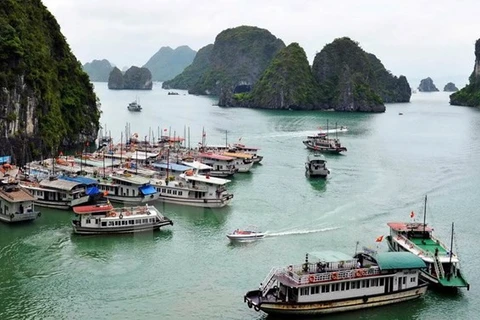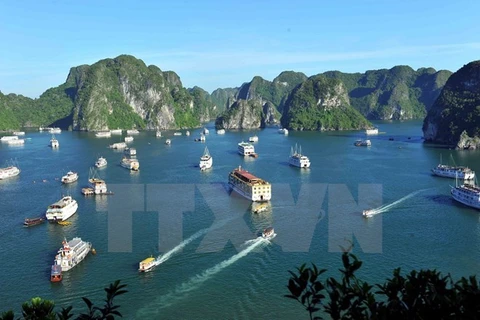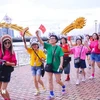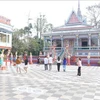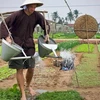Quang Ninh (VNA) – A conference was held in Ha Long city on September 25 to boost tourism connection between Vietnam’s northern province of Quang Ninh and China’s Guangxi Zhuang Autonomous Region.
During the event, Quang Ninh’s Ha Long and Mong Cai cities and Guangxi’s Dongxing and Guilin signed a memoranda of understanding (MoU) on tourism development.
Accordingly, the localities agreed on general cooperation principles and mechanism to expand tours, and commitments to service quality, among others.
Representatives from the localities briefed on their potential and advantages.
Ha Long underlined its potential for sea and island tourism development, with the highlight being the UNESCO-recognised World Heritage site of Ha Long Bay while Mong Cai city introduced its cultural, sea-island, and border tourism development.
The two Chinese localities also introduced their potential for cultural, resort, border tourism development.
Over the past years, the four localities have gained significant achievements in tourism cooperation. The effectiveness is yet to match the potential.
The two sides need to boost their exchange and connection to develop their own special products. More communications and advertisement campaigns should be launched, while state management on tourism should be strengthened, and experience exchanged.
Ha Long is a must-go place for those who spend holidays in Vietnam, in particular Quang Ninh province, as it is home to Ha Long Bay, a World Natural Heritage Site, which was recognised by the United Nations Educational, Scientific and Cultural Organisation (UNESCO). Ha Long Bay has been named one of the seven natural masterpieces of the world.
With its strength, Ha Long has a lot of opportunities to grow into a leading tourism hub of the Southeast Asian region.
Ha Long Bay, literally “descending dragon bay”, spans 1,553 square kilometres and includes 1,969 islands of various sizes. It was recognised as a UNESCO World Heritage Site in 1994 and 2000.
The bay features thousands of limestone karsts and islets in various shapes and sizes.
The limestone in the bay has gone through 500 million years of formation in different conditions and environments. The geo-diversity of the environment has created biodiversity, including a tropical evergreen biosystem, oceanic and sea biosystem. Ha Long Bay is home to 14 endemic floral species and 60 endemic faunal species.-VNA

